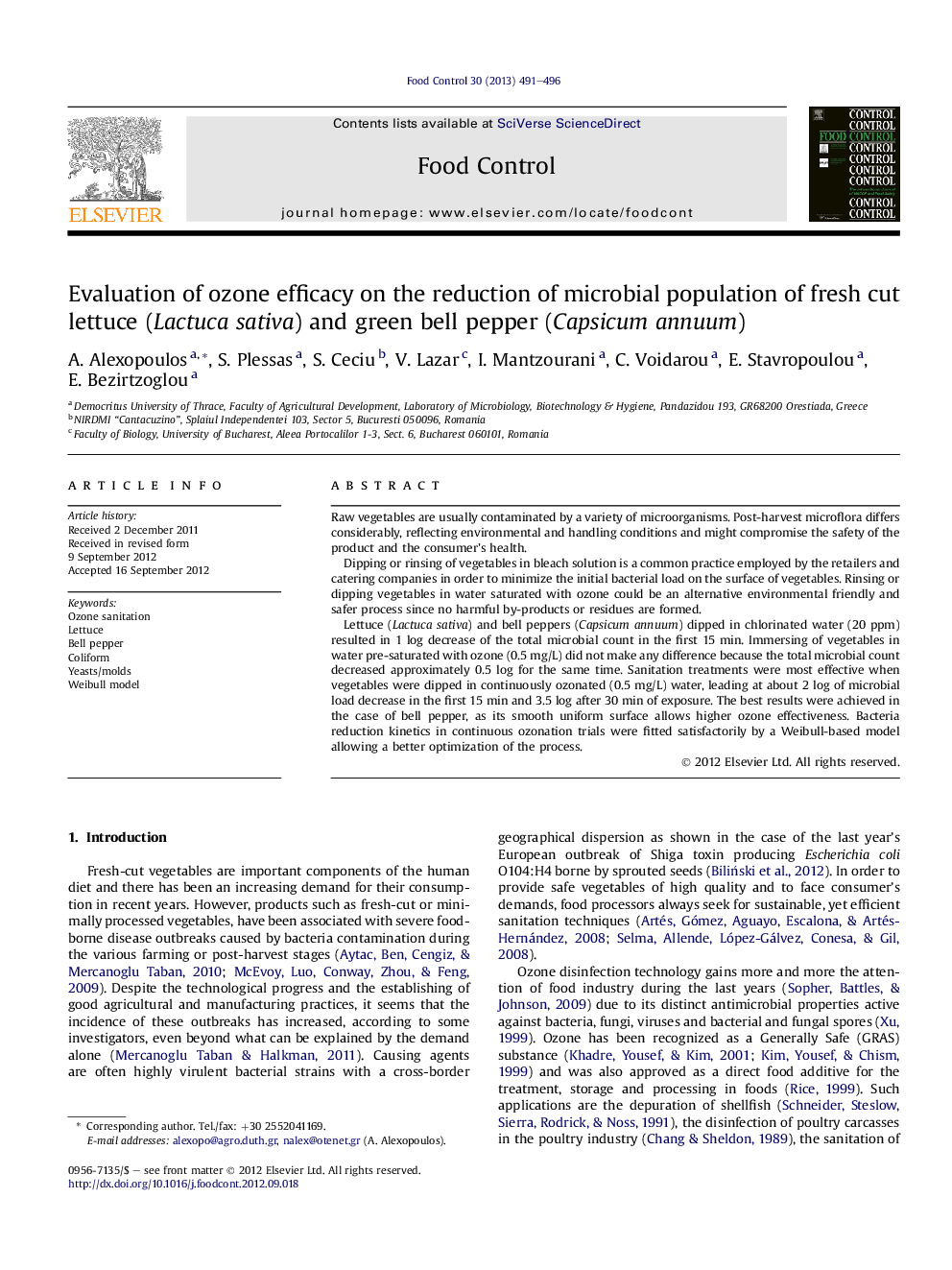| کد مقاله | کد نشریه | سال انتشار | مقاله انگلیسی | نسخه تمام متن |
|---|---|---|---|---|
| 4559456 | 1628426 | 2013 | 6 صفحه PDF | دانلود رایگان |

Raw vegetables are usually contaminated by a variety of microorganisms. Post-harvest microflora differs considerably, reflecting environmental and handling conditions and might compromise the safety of the product and the consumer's health.Dipping or rinsing of vegetables in bleach solution is a common practice employed by the retailers and catering companies in order to minimize the initial bacterial load on the surface of vegetables. Rinsing or dipping vegetables in water saturated with ozone could be an alternative environmental friendly and safer process since no harmful by-products or residues are formed.Lettuce (Lactuca sativa) and bell peppers (Capsicum annuum) dipped in chlorinated water (20 ppm) resulted in 1 log decrease of the total microbial count in the first 15 min. Immersing of vegetables in water pre-saturated with ozone (0.5 mg/L) did not make any difference because the total microbial count decreased approximately 0.5 log for the same time. Sanitation treatments were most effective when vegetables were dipped in continuously ozonated (0.5 mg/L) water, leading at about 2 log of microbial load decrease in the first 15 min and 3.5 log after 30 min of exposure. The best results were achieved in the case of bell pepper, as its smooth uniform surface allows higher ozone effectiveness. Bacteria reduction kinetics in continuous ozonation trials were fitted satisfactorily by a Weibull-based model allowing a better optimization of the process.
► The efficiency of ozone as sanitizing agent in fresh-cut lettuce and bell peppers was evaluated.
► Best sanitation results achieved when vegetables immersed in continuously ozonated water (0.5 mg/L).
► Dipping of vegetables in chlorinated (20 ppm) or pre -ozonated water was not so effective.
► Bacteria as coliforms and total aerobic mesophiles were more sensitive to ozone.
► Bacteria reduction kinetics rather than yeasts/molds was best fitted by a Weibull-based model.
Journal: Food Control - Volume 30, Issue 2, April 2013, Pages 491–496